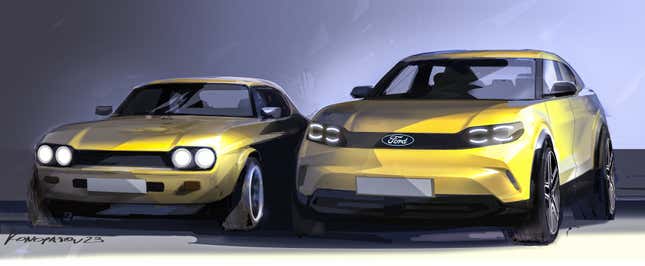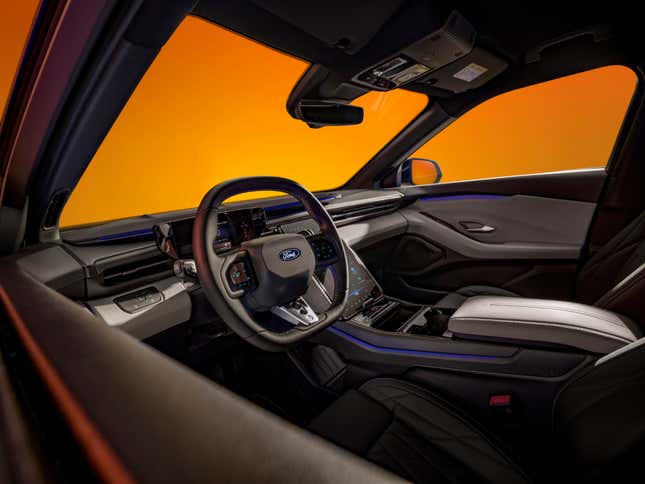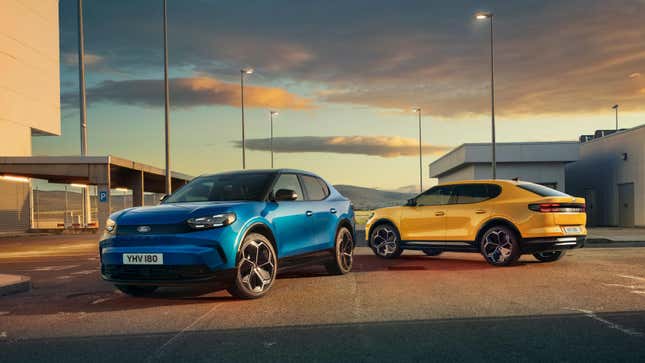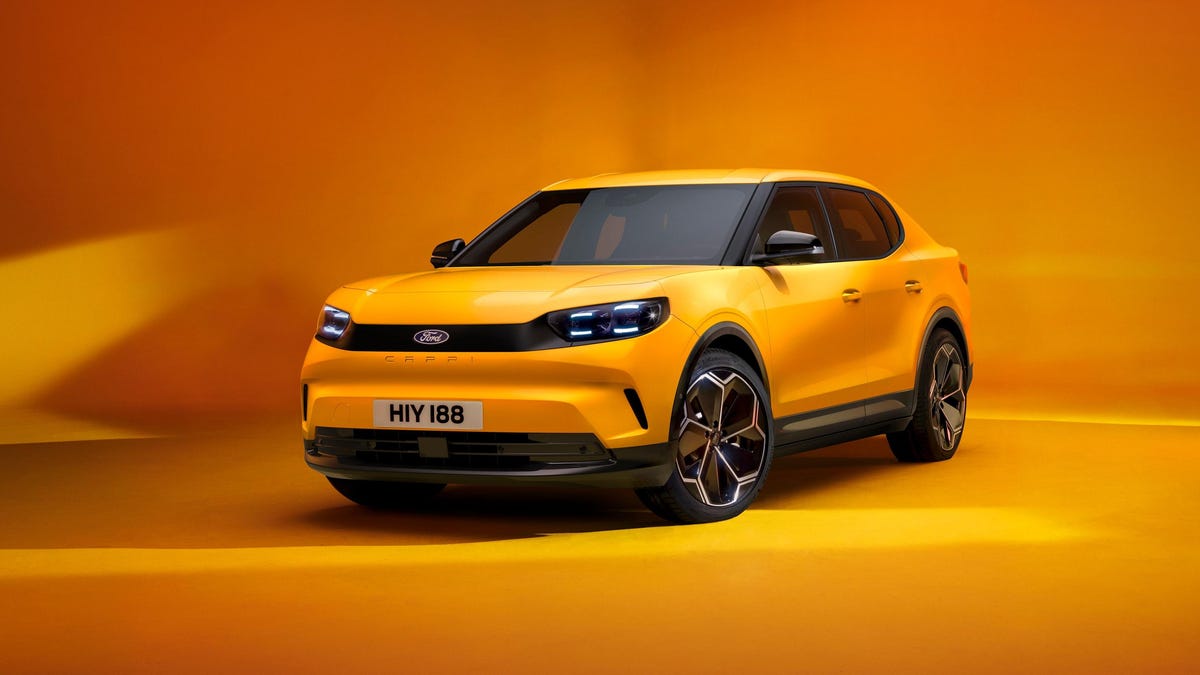Car enthusiasts love to get upset when a brand reuses an iconic name on a car that isn’t exactly the same as the original, and now y’all have another opportunity with the new Ford Capri. Where the original Capri was a gas-powered two-door sports coupe sold in Europe through three generations between 1968 and 1986, the new Capri is an electric four-door crossover sedan thing that uses Volkswagen underpinnings. Got your pitchforks out yet?
I wasn’t a fan of the new Capri when I first saw leaked images, but it’s starting to grow on me. The form factor is very similar to the Polestar 2 — the Capri looks like a sedan in profile, but it has a raised ride height and body cladding to hide the battery heft, a sloping liftback hatch in the rear, and bluff overhangs. At 182.4 inches long the Capri is a couple inches shorter than a Mustang Mach-E, and it’s about the same height and width.
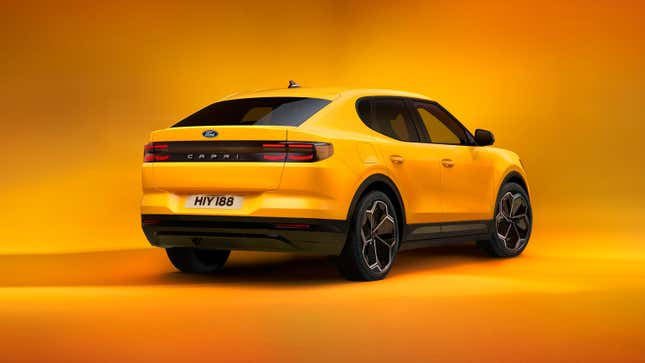
The rounded D-pillar and quarter window, black A-pillar, quad LED headlights and taillights, black panel “grille” are all callbacks to the old Capris, and there are some other cool details like the Capri name stamped into the front bumper. Ford says “the new all-electric Capri is the car the iconic sports coupe was destined to become. No other family EV has heritage like this.” I’m not so sure about that, but it’s more of a connection than the Mitsubishi Eclipse Cross has to its namesake.
Like the Europe-only Ford Explorer EV, the Capri is based on VW’s MEB platform. The rear-wheel-drive base model has a 77-kWh battery pack and a single electric motor at the rear wheel putting out 282 horsepower and 402 pound-feet of torque, which sends the car to 62 mph in a respectable 6.4 seconds. The all-wheel-drive Capri has a 79-kWh battery, with an electric motor at each axle putting out a total of 335 hp and a 0-to-62-mph time that drops to 5.3 seconds. (Ford doesn’t give a combined torque figure, only saying that the front motor makes 99 lb-ft.)

Ford says the single-motor Capri has a range of 390 miles on the European WLTP cycle, while the dual-motor car will go 368 miles. Charge times are disappointingly slow, though. The rear-drive Capri can charge at up to 135 kW, good enough to go from 10 to 80 percent in 28 minutes, and the AWD model can charge at up to 185 kW for a 26-minute 10-to-80-percent charge.
The Capri’s interior looks pretty much identical to the Explorer EV’s, though sport seats with integrated headrests and a squircle-shaped steering wheel are unique to the Capri. The vertically oriented 14.6-inch central touchscreen can slide forward to reveal a lockable cubby hole, and a “MegaConsole” under the front armrest holds over half a cubic foot of stuff. A soundbar sits at the top of the dashboard, and the driver also gets a 5-inch digital gauge cluster screen.
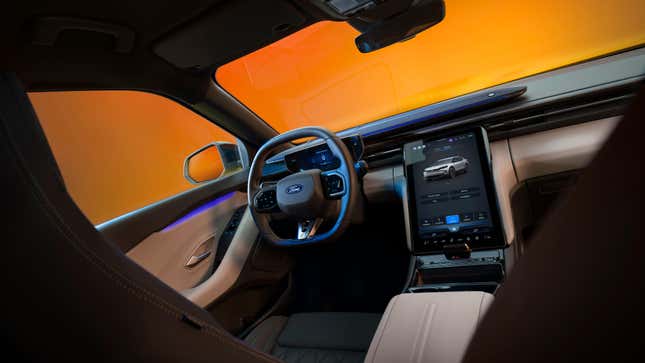
Standard features include a massaging drivers seat (apparently the passenger is shit outta luck on that front), a heated steering wheel, dual-zone automatic climate control, navigation and keyless entry. You can get the Capri with a hands-free tailgate, a panoramic sunroof, ambient lighting, a B&O sound system and other niceties. Tons of driver-assist features come standard, too, but you have to pay extra for a 360-degree camera, parking assist and lane centering.
The Capri will enter production in Cologne, Germany, alongside the Explorer EV, with deliveries set to start in a few months. In the UK the Capri costs about £5,000 more than a Mustang Mach-E and around £2,000 more than the Explorer EV, which is also similarly sized.
